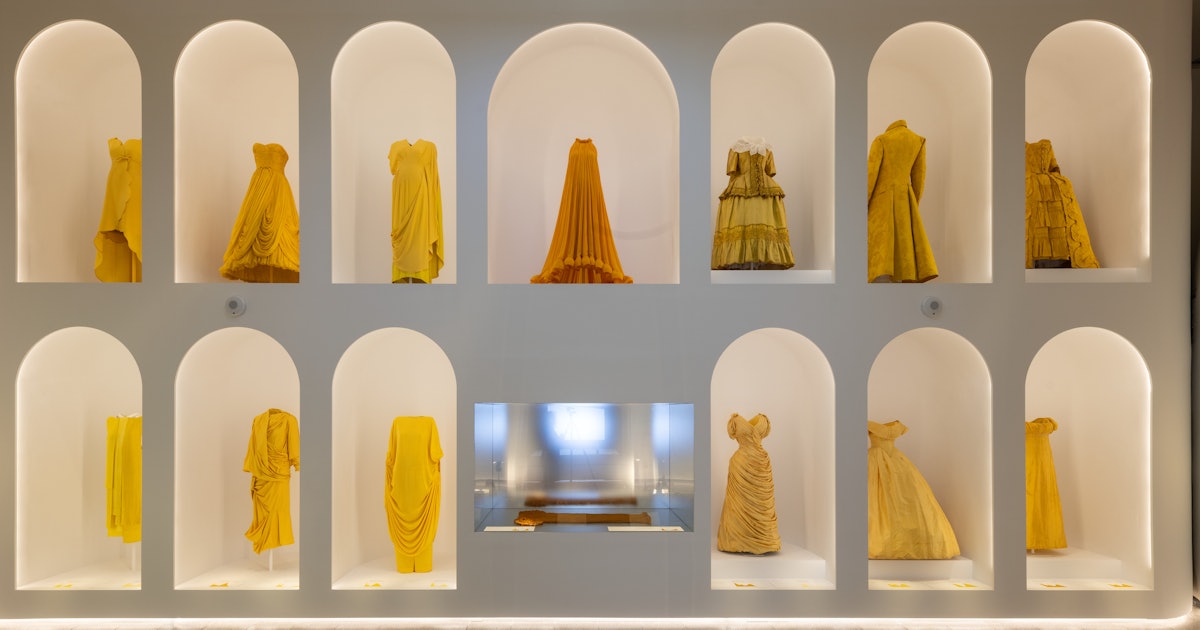Fashion
Inside the Costume Institute’s ‘Sleeping Beauties’ Exhibition

During a humid morning on the first Monday of May in New York City, throngs of characters buzzed around the Metropolitan Museum of Art’s entrance as early as 9 AM—a good eight hours ahead of the Met Gala, set to take place that evening. The crowds were there in hopes of spotting some A-list stars. But ahead of the gala, the morning preview of the Costume Institute’s new exhibition “Sleeping Beauties: Reawakening Fashion,” upon which the Met Gala theme is based, was the main star of the show. Editors, friends of The Met, and designers like Thom Browne and Collina Strada’s Hillary Taymour filed in to be the first to view the new interactive exhibition.
“Walking through this exhibition, you made me realize what I do as a designer does have historical importance,” Jonathan Anderson, whose fashion label Loewe is a sponsor of the event, told curator Andrew Bolton during opening remarks. “This exhibition smells different, it looks different—it’s just magical.”
Comprised of approximately 250 items drawn from the Costume Institute’s permanent collection, the show centers 15 items that are particularly and incredibly delicate, too fragile to be worn (these are the “Sleeping Beauties” of the exhibition) while the underlying theme of the whole show concerns nature and the inherent dynamics of fragility.
Some of the objects on view date back almost 400 years. Many of the “sleeping beauties” lie flat in glossy glass cages to showcase just how delicate they really are. A robe à la française from the mid 1700s is positioned near a contemporary white Prada jacket covered in abstract scarlet red blossoms, while a kaleidoscopic disco ball of a Connor Ives gown sparkles in the distance. But seeing fashions from such disparate time periods doesn’t feel scattered at “Sleeping Beauties.” In fact, the organization of the pieces provides context.
“Fashion is a living art form that requires most of our senses for its fullest appreciation, and greatest understanding,” Bolton said—an idea that takes center stage in “Sleeping Beauties: Reawakening Fashion.” This might be the first Costume Institute exhibition where guests are encouraged to touch a textural dress model and its matching wall. Elsewhere, the “smell artist” Sissel Tolaas extracted molecules from 57 different garments in the show for a multisensory experience. Plastic tubes hang from the walls, where guests can sniff the scents of the gowns and their wearers (sweat, hairspray, perfume, and all).
Organized by themes of nature related to land, sea, and sky, there are rarities from Alexander McQueen including the Sarah Burton-designed butterfly dress from spring/summer 2011 and the razor clam dress from spring/summer 2001 (accentuated in the exhibition with the sound of the dress in movement). While the show made a point of putting delicate pieces behind glass, it didn’t really touch on the question of when fashion should be put in a museum, nor the ethics of wearing fragile, historical garments. (Kim Kardashian, for instance, revived that conversation when she wore Marilyn Monroe’s dress down the Met Gala red carpet in 2022.)
The floral fantasies and feats of nature in fashion were dreamy. And playful objects like Elsa Schiaparelli’s famed insect necklace and Undercover’s light-up dress filled with flowers were inspiring. Rare Christian Dior and Lanvin creations made the show fun, too. A Loewe jacket that sprouted grass and a sea of vintage hats under a glass tube were some of the other enchanting objects on display. This exhibition proves nature is a constant influence on fashion—and the fragility of wearable objects will always be a subject of fascination.









